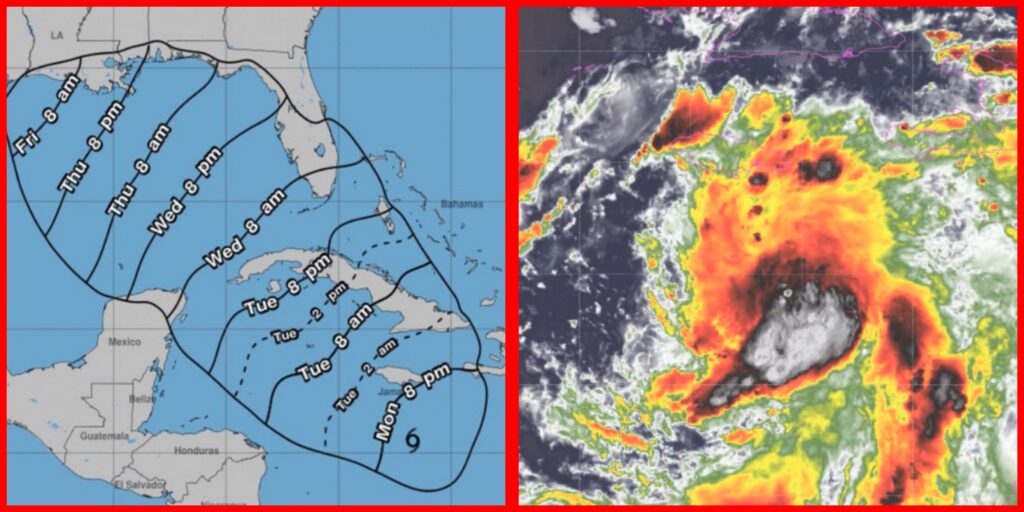
MyNews13.com – Rafael is in the Caribbean Sea with max winds of 45 mph and is moving northward. It’s moving through an area of low wind shear and warm sea surface temperatures, so development conditions are favorable through midweek.
It’s going to begin to bring areas of heavy rainfall and winds to portions of the western Caribbean by early Tuesday, including Jamaica.
Hurricane conditions are expected in the Cayman Islands on Tuesday and in a portion of Cuba on Wednesday, where it is expected to make landfall as a Category 1 storm.
Rafael will move into the southern Gulf of Mexico by Wednesday. It will pass near the Florida Keys on Wednesday as it moves north. There is a lot of uncertainty in the long-range forecast of Rafael’s track and intensity, but strong upper-level winds in the Gulf of Mexico should limit intensification as it moves toward the Gulf Coast.
A Tropical Storm Warning is in effect for Jamaica, and Hurricane Warnings are in effect for the Cayman Islands. Tropical Storm and Hurricane Watches are in effect for Cuba.
The drastic differences between two major forecast models on the storm’s track once it enters the Gulf of Mexico highlight the forecast uncertainty.
One depicts Rafael making landfall in western Cuba then tracking generally to the northwest before making landfall somewhere between Louisiana and the Florida Panhandle.
The hurricane center’s forecast looks rather similar to this scenario.
Any shifts will have a significant impact on the flood threat from the storm in Florida and other parts of the Southeast.
The storm is enhancing rainfall ahead in these areas ahead of its potential arrival there. This means any areas that do get rain from the storm later this week or weekend will face an increased flood threat.
Five hurricanes have made landfall on the Gulf Coast this year, but this storm seems unlikely to be as severe as hurricanes Helene and Milton because its strength could be hampered by the terrain of Cuba and hostile storm-disrupting winds over the Gulf.
Tropical activity typically winds down in November, but the month still occasionally produces a storm.
However, US landfalls are exceptionally rare as 98% of named storms make landfall in the US before November, according to hurricane expert Michael Lowry.
The Atlantic hurricane season ends November 30.
 FOX (@PaulFox13)
FOX (@PaulFox13) 


